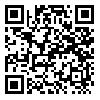Volume 10, Issue 6 (Shenakht Journal of Psychology and Psychiatry 2024)
Shenakht Journal of Psychology and Psychiatry 2024, 10(6): 1-11 |
Back to browse issues page
Download citation:
BibTeX | RIS | EndNote | Medlars | ProCite | Reference Manager | RefWorks
Send citation to:



BibTeX | RIS | EndNote | Medlars | ProCite | Reference Manager | RefWorks
Send citation to:
KhalilAhmadi M, Azimzadeh E, Molanorozi K. The effects of manipulating sensory afferent information and cognitive dual tasks on postural control. Shenakht Journal of Psychology and Psychiatry 2024; 10 (6) :1-11
URL: http://shenakht.muk.ac.ir/article-1-1912-en.html
URL: http://shenakht.muk.ac.ir/article-1-1912-en.html
1- PhD Student, Department of Motor Behavior, Science and Research Branch, Islamic Azad University, Tehran, Iran
2- Assistant Professor, Department of Motor Behavior, Shahid Beheshti University, Tehran, Iran ,Elhamazimzadeh@gmail.com
3- Assistant Professor, Department of Motor Behavior, Science and Research Branch, Islamic Azad University, Tehran, Iran
2- Assistant Professor, Department of Motor Behavior, Shahid Beheshti University, Tehran, Iran ,
3- Assistant Professor, Department of Motor Behavior, Science and Research Branch, Islamic Azad University, Tehran, Iran
Abstract: (917 Views)
Introduction: The complex interaction of nervous, sensory, skeletal- muscular systems and memory load leads to the maintenance of postural control stability in humans.
Aim: The aim of this study was to investigate the effects of manipulating sensory afferent information and cognitive dual tasks on postural control.
Method: The current research method was semi-experimental. The statistical population included girls aged 10-12 years in one district of Tehran in 2020-2021, and 30 girls who were randomly selected and placed in two groups with and without dual cognitive tasks. The subjects were randomly divided into two groups with and without cognitive dual tasks. A Biodex balance meter was used to measure the stability of postural control. Subjects were assessed in three conditions: standing on a hard surface with eyes open, standing on a hard surface with eyes closed, and standing on foam with eyes open. The data were analyzed using analysis of variance and software SPSS-26.
Results: The results showed that the main effect of group was not significant (P=0.09), but the main effect of condition and the interaction effect of group and condition (P=0.01) were significant. Also, the results related to the index of postural control in the within-posterior direction showed that the main effect of group (F(1,28)=4.41,P=0.04), the main effect of condition (F(5,140)=174.94,P=0.001), and the interaction effect of group and condition (F(5,140)=2.69,P=0.02) were significant.
Conclusion: Based on the results, vision and dual cognitive tasks are among the most important factors affecting postural control, so performing secondary cognitive tasks led to a decrease in the stability index of postural control in girls. Therefore, in order to increase the amount of cognitive load in people, it is suggested to use multi-sensory exercises to increase people's attention capacity.
Aim: The aim of this study was to investigate the effects of manipulating sensory afferent information and cognitive dual tasks on postural control.
Method: The current research method was semi-experimental. The statistical population included girls aged 10-12 years in one district of Tehran in 2020-2021, and 30 girls who were randomly selected and placed in two groups with and without dual cognitive tasks. The subjects were randomly divided into two groups with and without cognitive dual tasks. A Biodex balance meter was used to measure the stability of postural control. Subjects were assessed in three conditions: standing on a hard surface with eyes open, standing on a hard surface with eyes closed, and standing on foam with eyes open. The data were analyzed using analysis of variance and software SPSS-26.
Results: The results showed that the main effect of group was not significant (P=0.09), but the main effect of condition and the interaction effect of group and condition (P=0.01) were significant. Also, the results related to the index of postural control in the within-posterior direction showed that the main effect of group (F(1,28)=4.41,P=0.04), the main effect of condition (F(5,140)=174.94,P=0.001), and the interaction effect of group and condition (F(5,140)=2.69,P=0.02) were significant.
Conclusion: Based on the results, vision and dual cognitive tasks are among the most important factors affecting postural control, so performing secondary cognitive tasks led to a decrease in the stability index of postural control in girls. Therefore, in order to increase the amount of cognitive load in people, it is suggested to use multi-sensory exercises to increase people's attention capacity.
Type of Study: Research |
Subject:
Special
Received: 2023/04/2 | Accepted: 2023/09/18 | Published: 2024/02/17
Received: 2023/04/2 | Accepted: 2023/09/18 | Published: 2024/02/17
Send email to the article author
| Rights and permissions | |
 |
This work is licensed under a Creative Commons Attribution-NonCommercial 4.0 International License. |






